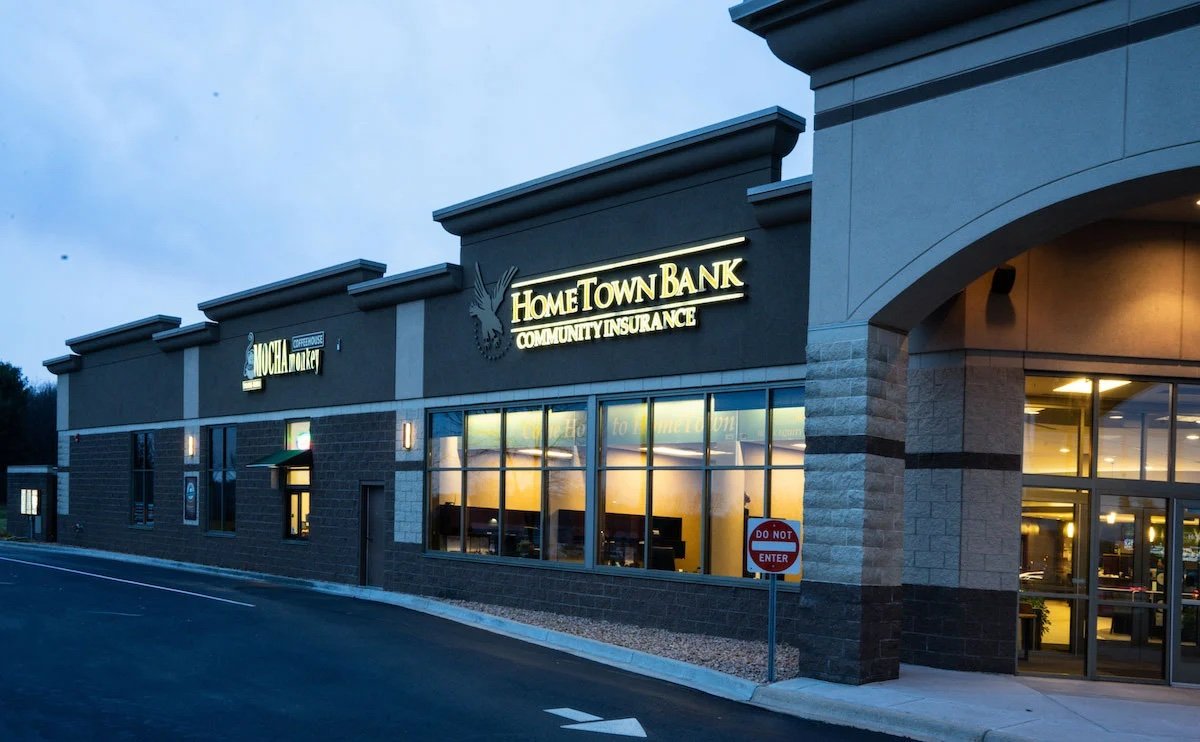Co-Branding: How a Strategic Bank Design Can Bring in More Customers
How do banks reach new customers? The industry as a whole is seeing a decline in the number of lobby transactions, and mobile and app-based banking is on the rise. Still, the physical location of the bank is the number one reason why people bank where they do. Knowing all this, how can you get more potential customers into your facilities?
With co-branding.
What is Co-Branding?
Co-branding is an innovative approach to bank design. By co-branding with another business, banks create an environment to draw more non-customer traffic into the bank. It is a proven way to meet new people in your community and create opportunities to begin building relationships.
In Banking, Relationships Are Still Key
Banking has changed. Mobile, online and other forms of electronic banking should be available for your customers.
Remember in the 1960s when the ATM was introduced, in the 1970s and 1980s when the number of drive-up lines increased, and in the late 1990s when online banking was introduced? These technologies were and still are important innovations for the banking industry. But they do not replace relationships and the face-to-face interaction that your most profitable customers want.
New technologies will come and go, but the fundamental principle of banking that has been and will always be is relationships. Your profitable customers want the "trusted advisor" and relationships.
Meet Your Future Customers
A bank's most profitable customers are not likely to be within the 18- to 24-year-old demographic. That title usually belongs to business owners and seniors who want to meet face-to-face with their bankers from time to time.
Prospective customers looking for a new bank will typically visit your website first. For the younger generations, if they like your website, it will be second nature for them to open an account online. But, the older, more immediately profitable customers will want to meet before they change banks.
Ten years from now, when the younger generations reach their late twenties and early thirties, they too will want to meet face-to-face to discuss their more important financial ideas and needs. And co-branding allows you to start building relationships with this younger demographic.
Co-Brand Your Bank to Increase Potential Customer Traffic
If yours is among the branches with decreasing lobby transaction counts, deciding to share your space with a local business partner is a strategy to look into. Co-branding generates additional cross-traffic in your lobby and provides the bank with more exposure to individuals who are not customers.
With foot traffic coming in, it's an opportunity to begin building new relationships.
What types of businesses work well with co-branding? Some traditional partners have been investors, insurance agencies, accountants, attorneys and title companies. But we recommend taking a serious look at partnering with retail businesses, like a coffee shop or cell phone store.
By choosing to share your space with a retail business, you're creating the opportunity for repeat non-customer foot traffic.
A Co-Branding Example
A great example of co-branding is HomeTown Bank in Waconia, Minnesota, and Mocha Monkey, the local coffee shop. Mike Orth, Vice President and Manager of the branch worked with John Schmidt, the owner of Mocha Monkey, to develop the marketing materials and co-branded slogan of “Banking Brewed Locally.” Also included in the building is a title company, financial advisor, and health insurance company.
The amount of cross traffic they've experienced has been very positive:
"At any given time throughout the day, I see 10 to 12 people sitting in the shared waiting space. Coffee customers are exposed to the bank employees and the bank customers are able to get a great cup of coffee. This union of HomeTown Bank and Mocha Monkey has more than exceeded our expectations and allowed us to hit our revenue goals."
- Mike Orth, Vice President and Branch Manager
Why Co-Branding Works
For HomeTown Bank, the basic design concept was to create a coffee shop with a bank wrapped around it. It's hard to tell where the coffee shop stops and where the bank starts.
When you enter the bank, you are greeted with a large fireplace, video merchandising and a variety of waiting chairs and bistro tables spread out and around the bank’s lobby. For security, there are hidden sliding glass doors, so the coffee shop can operate outside of banking hours.
At any given time throughout the day, there are 5-10 people sitting in the bank, oops, I mean the coffee shop. Due to repeat exposure, coffee customers become familiar with the bank employees, and the bank customers are able to get a good cup of coffee during their visit with the bank.
Small business owners have meetings in the coffee shop or just sit and work on their laptops. The coffee shop becomes a place to do business when they can’t get on the golf course.
Coffee shops are a great draw for the younger crowd, as well. It’s a place to get quality coffees and meet up with their friends. All the while, they're becoming familiar with the bank and its employees.
As those coffee shop customers grow older and have questions about non-transactional bank services, like small business loans or home mortgages, they'll have an already-established relationship to tap into.
Co-Branding and Relationship-Building
Before deciding to build a new branch or remodel your existing facility, you might want to think about the purpose your lobby serves. Co-branding can change your space from “transaction-based” to “relationship-based." And in today's banking world, this shift can make all the difference.
If you are thinking about remodeling, consider reducing the size of your transaction area and making the space feel more inviting. Co-branding enables you to put your money where the profitable customers could be: in a nice, comfortable, warm waiting (coffee shop) area.
If your building is older, and many are, you probably have some extra, unused space. If so, you might have an opportunity to co-brand with another business and get more people into your bank and invite them to stay for awhile.


